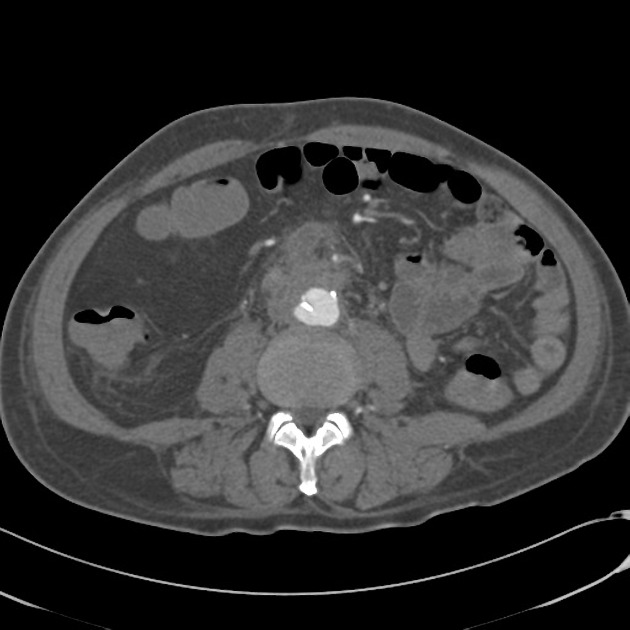Presentation
Sepsis and abdominal pain.
Patient Data







Stranding and wall thickening involving a 5 cm length of the distal abdominal aorta at the bifurcation. This extends to involve approximately 2 cm of the proximal aspects of both common iliac arteries. The finding is in keeping with aortitis.
There are lobulated saccular aneurysms arising from the aortitis.
There is an associated peri-aortic collection with gas extending anterior and inferior to the aorta.
Case Discussion
CT-guided biopsy of the peri-aortic inflammatory mass was performed and Aspergillus fumigatus was isolated.
Fungal infection is a rare cause of aortitis, with Candida and Aspergillus the most common fungi.




 Unable to process the form. Check for errors and try again.
Unable to process the form. Check for errors and try again.